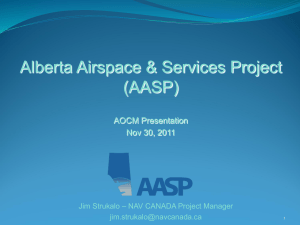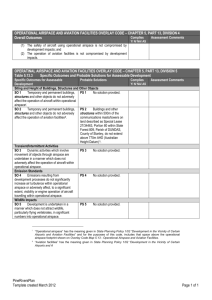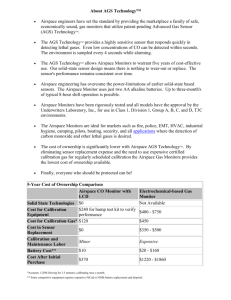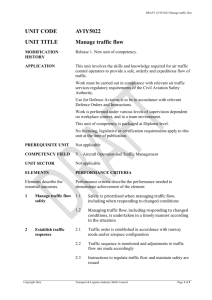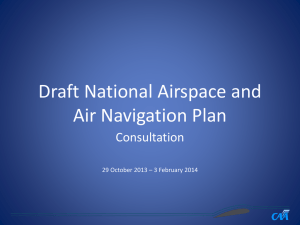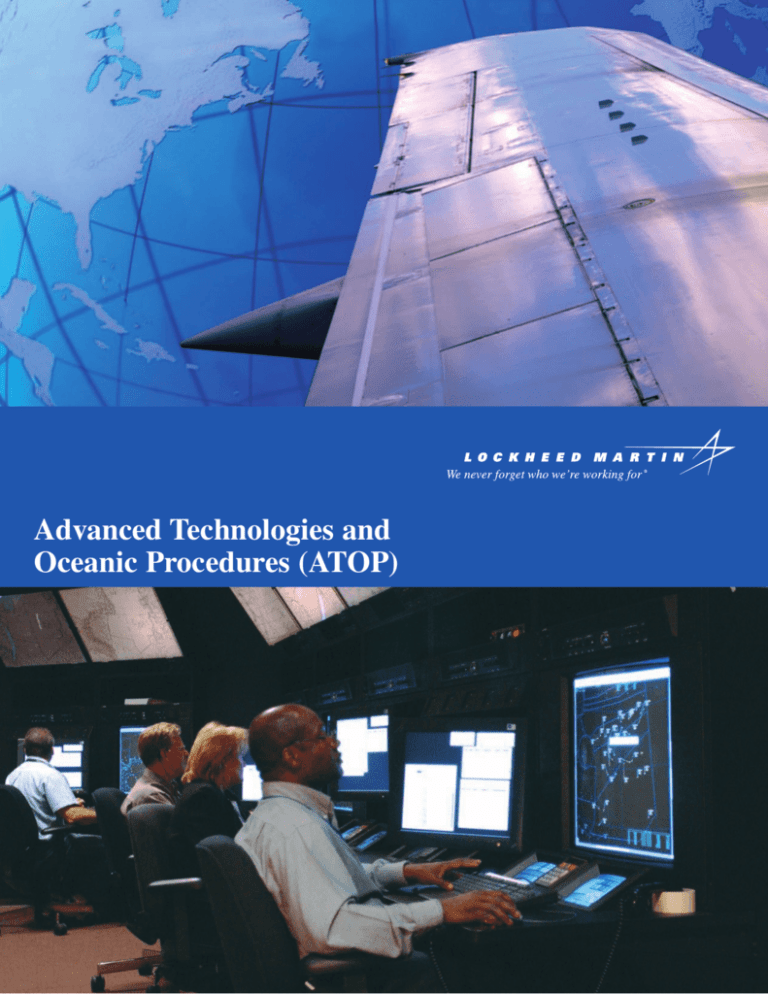
Advanced Technologies and
Oceanic Procedures (ATOP)
ATOP System: Managing the
Skies from Sea to Shining Sea
When the U.S. Federal Aviation Administration
(FAA) wanted to replace its existing oceanic
automation system with innovative next generation air transportation technology, a world-class
team lead by Lockheed Martin met the challenge.
Today, oceanic routes managed by the FAA are
guided by the Ocean 21 system as part of the
Advanced Technologies and Oceanic Procedures
(ATOP) initiative. Air traffic controllers in Islip,
N.Y., Oakland, Calif., and Anchorage, Alaska,
depend on this system — which received a full
system technology refresh in 2009 — to safely
reduce air separation between flights and enable
airlines to reduce fuel and emissions on many
oceanic flights.
Today’s Ocean 21 system provides air traffic
controllers with state-of-the-art technology
that yields significant benefits to airspace users.
These benefits include Future Air Navigation
Systems (FANS) to support automatic dependent
surveillance-contract (ADS-C) position reporting. ADS-C supports reduced separation and the
ability for controllers to handle complex traffic
situations and grant pilot requests.
Lockheed Martin has unparalleled credentials
in oceanic, en route and terminal air traffic management (ATM) systems. Our ATM teams have
been supporting air navigation service providers
such as the FAA for more than 50 years.
To address challenges unique to the ATOP
initiative, Lockheed Martin teamed with Adacel,
Airways New Zealand and Sunhillo to develop
communication, navigation, surveillance and air
traffic management (CNS/ATM) technology for
operational use in the oceanic environment.
The ATOP solution stands alone in its ability
to provide world-class, best-of-breed support
not only for oceanic and transition airspace,
but also en route airspace supported by radar
and ADS-B surveillance.
Advanced Capabilities, Plus
Unparalleled Systems Integration
The ATOP system’s features include all of the
advanced capabilities necessary to modernize
air traffic control (ATC) operations to increase
capacity, efficiency and safety, while offering
a scalable system to meet diverse airspace
requirements.
ICAO Air Traffic Management System Implementation Plan
Regional ATM Operational Concept
Determination of major traffic flows
Identification of ATM objectives based on these traffic flows
Development of regional strategic airspace CNS infrastructure
Plan based on these requirements
P
P
Ocean 21TM Capability
P
Airspace Management
Optimized sectorization
Fixed RNAV routes
Contingency RNAV routes
Random RNAV routes
Airspace desegregation, flexible use of airspace
Application of RNP
Application of RCP
Application of RSP
P
P
P
P
P
P
P
P
Air Traffic Services
Trajectory conformance monitoring
Minimum safe altitude warning
Conflict prediction
Conflict alert
Conflict resolution advice
Functional integration of ground systems with airborne
Dynamic accommodation of user-preferred flight profiles
Reduced vertical separation
Reduced longitudinal separation
Reduced lateral separation
Independent IFR approaches to closely space runways
ATS inter-facility data (AIDC) communications
Application of data link
P
P
P
P
P
P
P
P
P
P
P
P
P
02.10-011
These features include automatic conflict probe
for aircraft-to-aircraft and aircraft-to-airspace
conflicts with conflict resolution advice;
incorporation of current wind data into aircraft
trajectory modeling; trajectory conformance
monitoring; electronic flight data (paperless
operations); automatic dependent surveillance
contract management; controller pilot data link
communications (CPDLC); air traffic services
inter-facility data communications (AIDC);
integrated presentation of all surveillance
information; and traffic load monitoring.
These capabilities are packaged in an ultra-high
availability architecture specifically designed
to support non-interfering hardware and
software maintenance.
The attribute that differentiates the ATOP
system the most is the controller workload
reduction that results form a proper integration
of these various advanced capabilities. For
example, a single mouse click to review, probe
and prepare the clearance response to a downlinked CDPLC request for an altitude change;
automatic uplinking of SIGMET information to
affected aircraft with no controller intervention
required; or an automatic uplinking of transfer of
communications to an aircraft for the appropriate
facility and radio frequency with no controller
intervention required.
This high degree of integration is a result of
the ATOP system being designed from the onset
to support CNS/ATM standards such as FANS.
In addition, this high degree of integration
enables the controller to proactively manage
airspace and be responsive to airspace user
requests by eliminating tasks that in the past
were time consuming.
For More Information
Lockheed Martin
Information Systems and Global Services-Civil
c/o Transportation and Security Solutions
9231 Corporate Boulevard
Rockville, MD 20850 USA
Contact: Business Development
Telephone: (301) 640-2266
E-mail: lm.isgs.communications@lmco.com
Lockheed Martin Corporation, 2010.
Printed in the United States of America,
All Rights Reserved.
©



